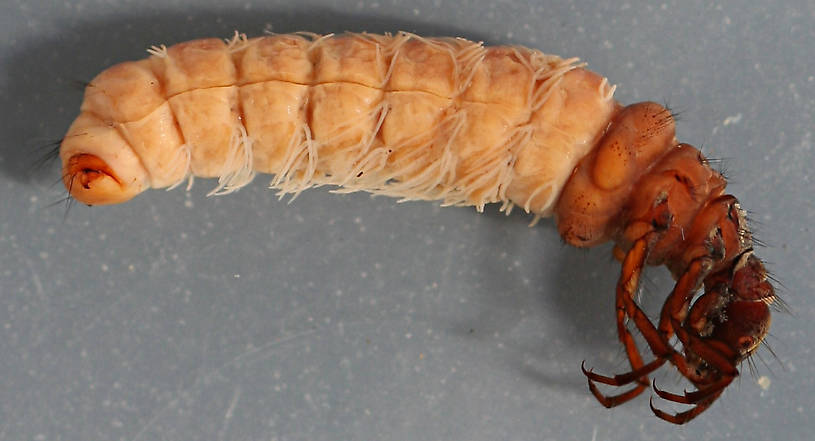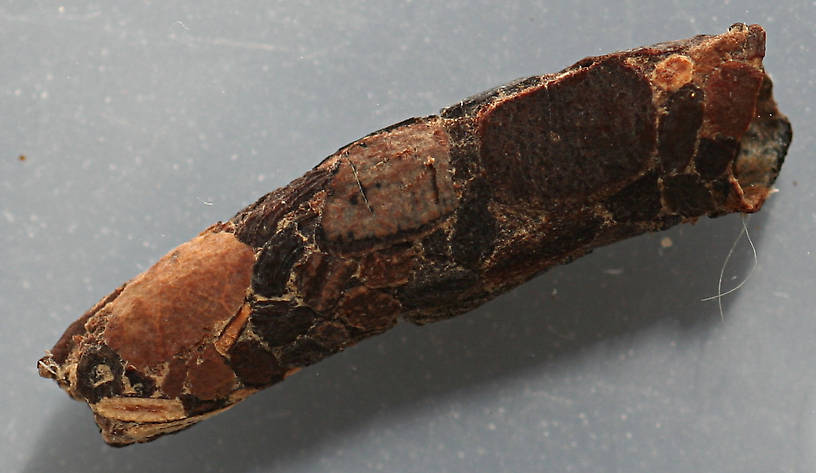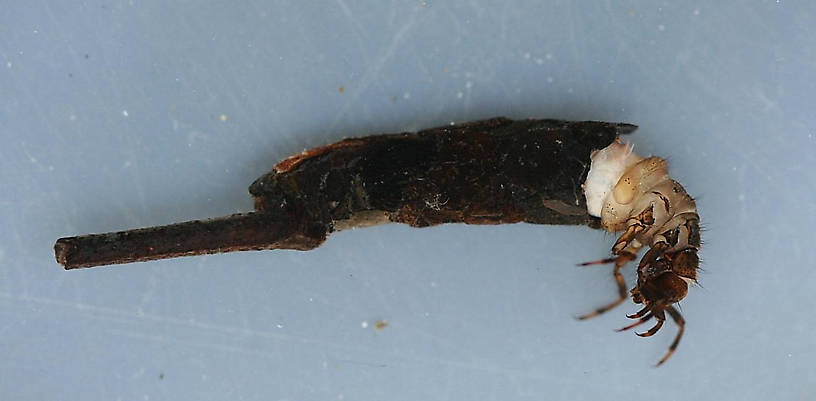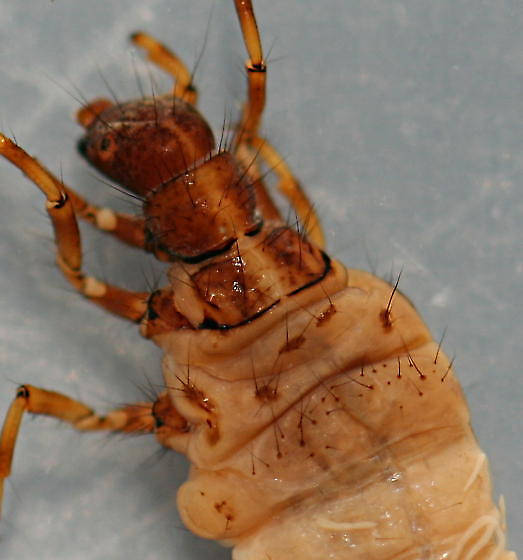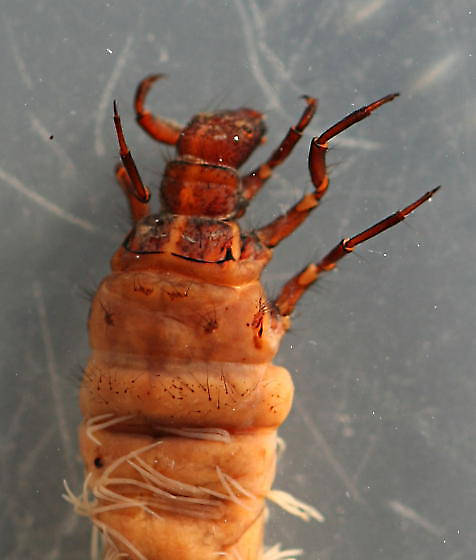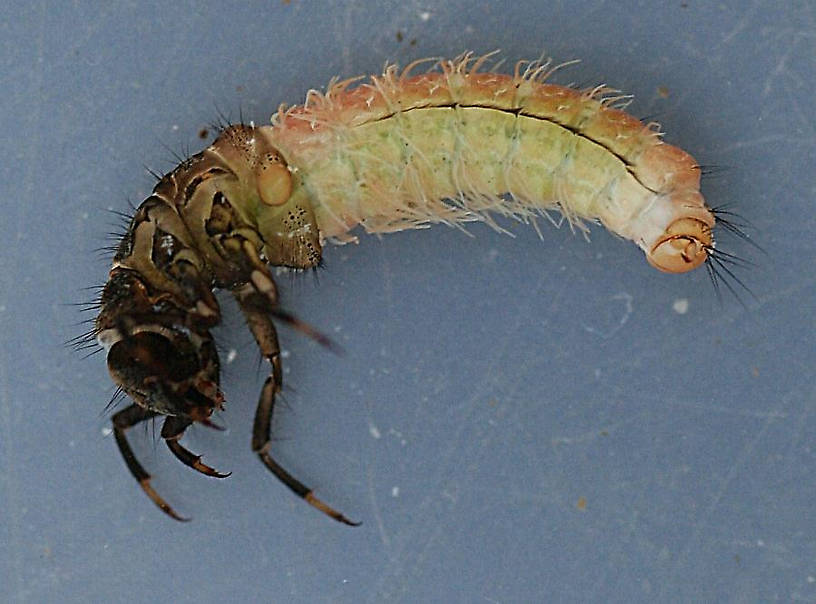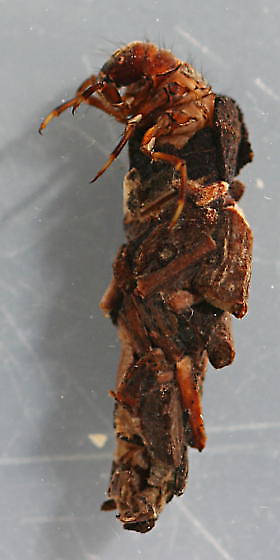Blog & Latest Updates
Fly Fishing Articles
Insects by Common Name


> > Onocosmoecus larvae and cases
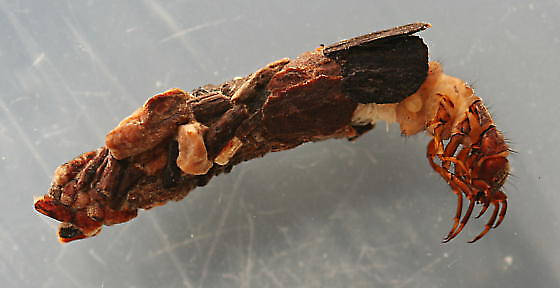
Intermediate larval case and larva. Case shows characteristics of early instar case towards the back while incorporating flat pieces towards the front. Case 15 mm. In alcohol.
| Millcreek | October 30th, 2014, 7:49 pm | |
| Healdsburg, CA Posts: 356 | A fairly common caddisfly in smaller tributaries of the Russian River though I haven't found it in the mainstem. The larvae were identified to genus using Merritt, Cummins and Berg (2008) and Wiggins (1976). They're probably Onocosmoecus unicolor. The larvae are usually found in areas of slow current in deeper water that has undercut banks with tangles of roots or branches extending below the waterline. Sweeping along the roots or branches yields the largest numbers of larvae. Earlier instar larvae construct cases of bits and pieces of twigs and flat pieces of wood that are irregular in appearance while later instars construct a more orderly case out flat pieces of wood, often with a stick trailing out from the bottom end of the case. Most larvae were collected from February through May. | |
Quick Reply
You have to be logged in to post on the forum. It's this easy:
Related Discussions
| Title | Replies | Last Reply |
| Re: Neophylax larvae and pupae (9 more) In the Photography Board by Millcreek | 3 | Nov 27, 2014 by Millcreek |
| Re: Agapetus larva and pupa (8 more) In the Photography Board by Millcreek | 6 | Jul 7, 2015 by Millcreek |
| Re: A couple of Odontoceridae - Marilia and Nerophilus (11 more) In the Photography Board by Millcreek | 4 | Oct 29, 2014 by Millcreek |
| Re: Nectopsyche sp. (1 more) In the Identify This! Board by Millcreek | 2 | Jan 15, 2015 by Creno |
| Re: Donegal Spring Creek In Fishing Reports by Wbranch | 2 | May 8, 2011 by Wbranch |
| Re: Heteroplectron californicum (2 more) In the Photography Board by Millcreek | 8 | Oct 15, 2014 by Crepuscular |
| Re: trying to figure out In the Insect Family Corydalidae by Buggy | 1 | Apr 19, 2009 by GONZO |
| Re: Oecetis sp. larvae and pupae (3 more) In the Identify This! Board by Millcreek | 9 | Jul 7, 2015 by Millcreek |
| Re: What are these?? In the Photography Board by Keystoner | 7 | Oct 8, 2010 by Konchu |
| Re: Is it a Grannom? In the Identify This! Board by Simon | 1 | Aug 29, 2021 by Millcreek |
Troutnut.com is copyright © 2004-2024 Jason
Neuswanger (email Jason). See my FAQ for information about use of my images.
 privacy policy
privacy policy

